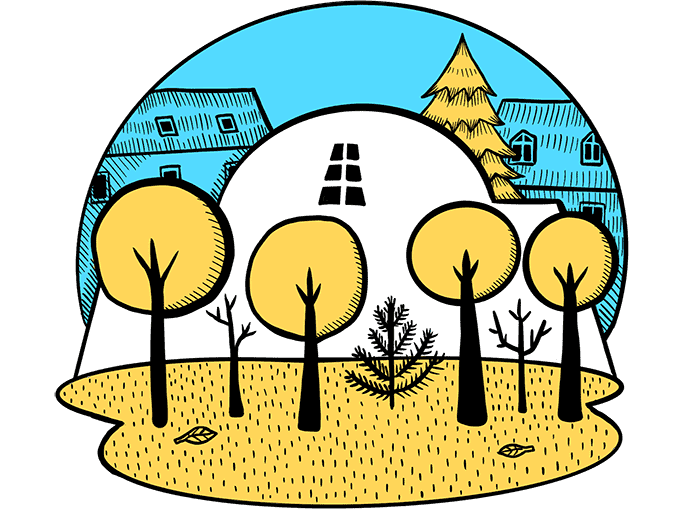About Laugarnesskóli
Laugarnesskóli, designed by architect Einar Sveinsson, is one of Reykjavík's oldest schools. It opened on October 19, 1935. Since its opening, many traditions have become integral to school life, giving it a unique character among Reykjavík's primary schools. Notable features include the school's art and natural history collection, morning singing, and Katlagil in Mosfellsdalur, with over 50 years of forestry, development, and outdoor education history.
Growth mindset and resilience
A growth mindset encourages us to see mistakes and challenges as opportunities to learn and grow. Perseverance gives us the will and dedication to continue working toward our goals and face new challenges.

Positive school culture
UNICEF Rights Respecting School
Here will be text - how can we display the text to the side as seen in Ingunnarskóli?
PBS positive behavioral support
This is where text will be added
UNICEF Rights Respecting School
Laugarnesskóli received recognition as a UNICEF Rights Respecting School in 2017, and this recognition has been renewed.
The goal of Rights Respecting Schools is to build a democratic environment by systematically cultivating knowledge, skills, and attitudes that help children become critical, active, and competent participants in modern society. With this goal, the basic principles of the Convention on the Rights of the Child are the starting point for all decisions in school and recreational activities. They are also reflected in the interactions between children, young people, teachers, youth workers and other staff.
More about Unicef Rights Respecting Schools
Green Flag school
Laugarnesskóli participates in the Green Flag project, which is based on the concept of education for sustainability.
Rainbow school
Laugarnesskóli has received Rainbow Certification from Reykjavík City. See link on the front page.
PBS positive behavior management
PBS (Positive Behavior Support) is a comprehensive approach that systematically encourages positive behavior instead of focusing on negative behavior and punishments. PBS is a three-tier system that covers the entire school community. It includes support systems for the school as a whole, classes/groups and individual students. The approach aims to train all school staff in shaping and maintaining desirable behavior in students. Behavioral expectations are made very clear and accessible.
The goals of PBS are to:
● Increase social skills and academic achievement by defining, teaching and supporting desirable behavior.
● Reduce undesirable behavior by creating clear rules for interaction. Emphasis is placed on anticipating and preventing behavioral problems with a clear disciplinary process
● Coordinate actions and work procedures of school staff to increase desirable behavior and prevent undesirable behavior.
Teaching methods
Early literacy
Beginning Literacy (I. Byrjendalæsi) is an interactive teaching method for reading instruction that covers all aspects of the native language. This integrates work with speaking, listening, reading and writing into a unified whole under the umbrella of literacy. Good children's books are the material used in learning and teaching, both in technical work with letters and sounds, as well as in vocabulary and comprehension work. The main advantage of this method is that students learn efficient techniques to continuously read new words that appear in text. Furthermore, specific aspects of the native language, such as phonological awareness, spelling, writing, vocabulary, sentence structure and grammar are integrated into the process. In letter introduction, the emphasis is on the phonics method. The fundamental principle of the phonics method is for students to understand that letters represent the sounds of words in spoken language.
Formative learning
Formative learning (I. leiðsagnarnám) is a process where students receive support and guidance to develop their own skills and independence in learning. Teachers guide students to set goals, evaluate their own learning and use their strengths. Goals must be well-defined so the child, teacher, and others involved in learning share the same understanding of achievement criteria. Students are encouraged to take on challenges and show perseverance in their studies. Mistakes are viewed as learning opportunities and a natural part of education. Formative learning aims to empower students to take responsibility for their own education.